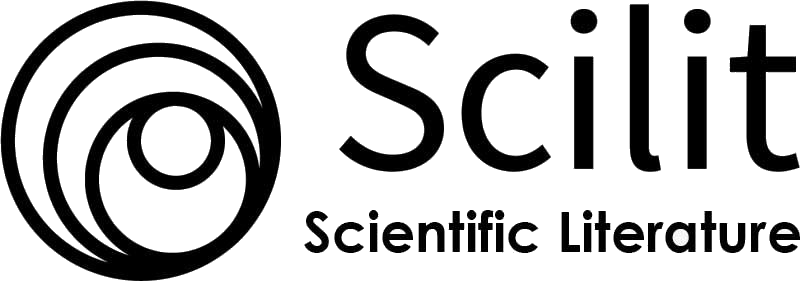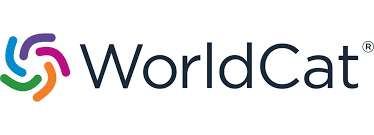The Contribution of M-Learning as a Climate Change Action
DOI:
https://doi.org/10.58425/jetm.v4i1.328Keywords:
Carbon dioxide, knowledge retention, competence-based curriculum (CBC), climate change, m-learningAbstract
Aim: The study assessed the carbon dioxide (CO₂) emissions avoided through M-Learning (short message service- SMS), determined the baseline knowledge retention (KR), and evaluated M-Learning changes in KR among community health promoters (CHPs). Notably, the initial training of CHPs conducted since 2006 had never been formally assessed.
Methods: This was a cross-sectional descriptive study and the sample size, n=348 (N=1,392) was calculated through Yamane's (1967) formula at a 95% confidence interval. Pre-intervention (PRIT) and post-intervention (POIT) tests measured KR before and after M-learning in a pretest-posttest quasi-experimental design. Four selected CHPs' key training manual messages from which they had been trained were interchangeably sent in the form of SMS; once per week for 12 weeks after PRIT and before POIT. This had been preceded by a 2-week SMS/ phone trial using different health-related messages. Competence based curriculum (CBC) rubrics; exceeding expectation (EE), 80–100%); meeting expectation (ME), 65-79%; approaching expectation (AE), 50-64%) and below expectation (BE), 0–49% measured both test scores.
Results: M-Learning reduced demand by 5,348 A4 papers on the assumption that each respondent would have needed one A4 paper (page) per week for key messages which also avoided 320.9Kg CO2 that would have been generated in paper manufacture from the determination that one A4 paper manufacture is 60gm of CO2. With a 92% response rate (n=320), at PRIT (82.2%) of respondents (n=263) had BE (0-49%) KR with a mean score of 30.25% (1.21 out of 4) but at POIT it rose to 62.25% (2.49 out of 4) which was an improvement ratio of 2.1.
Conclusion: This study confirms that M-Learning is an effective KR tool and a sustainable alternative to paper-based learning, reducing CO₂ emissions. It supports integrating digital learning solutions to combat climate change and enhance training effectiveness for CHPs.
Recommendations: The County Government of Nyandarua should integrate M-Learning into official training programs for CHPs and other professionals, mandate periodic digital training sessions to reinforce knowledge retention and implement policies that reduce paper dependency in offices and learning institutions, replacing printed materials with digital alternatives.
References
Ameh, C., Kerr, R., Madaj, B., Mdegela, M., Kana, T., Jones, S., Lambert, J., White, S., Dickson, F., Broek, N. (2016). Knowledge and Skills of Healthcare Providers in Sub-Saharan Africa and Asia before and after Competency-Based Training in Emergency Obstetric and Early Newborn Care. PLoS One, 2016; 11(12): e0167270. Published online 2016 Dec 22. https://doi.org/10.1371/journal.pone.0167270.
Bastawrous, A. and Armstrong, M. (2019). Mobile health use in low- and high-income Countries: an overview of the peer-reviewed literature. Journal of the Royal Society of Medicine. v.106 (4); 2013 Apr. https://doi.org/10.1177/0141076812472620. https://www.ncbi.nlm.nih.gov/pmc/articles/PMC3618170/
Brooks, A. (2019). What Is Community Health and Why Is It Important? Rasmussen University. https://www.rasmussen.edu/degrees/health-sciences/blog/what-is-community-health/
Brown, A. and Nieminen, M. (2017). How Kenyans are embracing mobile technology to Access healthcare. https://www.businesscalltoaction.org/news/how-kenyans-are-embracing-mobile-technology-to-access-healthcare.
Cavintek. (2025). How Paperless Schools are Transforming the Face of Learning https://www.cflowapps.com/paperless-school/
Cirrus Asssessment. (2023). Paper vs Online-testing: 12 Questions to consider https://cirrusassessment.com/paper-vs-online-testing-12-questions-to-consider/
Cloke, H. (2023). The Forgetting Curve: Why We Forget and How to Remember. Growth Engineering. https://www.growthengineering.co.uk/what-is-the-forgetting-curve/#:~:text=In%20other%20words%2C%20you%20lose,new%20information%20within%20a%20week.
Cohen, K. (2024). Advantages and Disadvantages of Online Classes. https://www.iu.org/blog/study-guides/advantages-and-disadvantages-of-online-classes/
Davies, D., Lawal, A., Orji, A., Tytherleigh, C., Walsh, K. (2024). Digital learning, face-to-face learning and climate change. Future Healthcare Journal. Volume 11, Issue 3, September 2024, 100156 https://doi.org/10.1016/j.fhj.2024.100156. https://www.sciencedirect.com/science/article/pii/S2514664524015467
Dewah, P. and Mutula, S. (2020). Knowledge retention strategies in public sector Organizations: Current status in sub-Saharan Africa. ResearchGate. Information Development 32(3). https://doi.org/10.1177/0266666914551070.
Dias, L. and Victo, A. (2017). Teaching and Learning with Mobile Devices in the 21st Century Digital World: Benefits and Challenges. European Journal of Multidisciplinary Studies. Vol. 5, Nr.1 May- Aug 2017. ISSN 2414-8385 (Online). https://www.researchgate.net/publication/318536485_Teaching_and_Learning_with_Mobile_Devices_in_the_21st_Century_Digital_World_Benefits_and_Challenges
Draiko, C., Yamarat, K., Panza, A., & Draleru, J. (2019). Knowledge, skills and Competency retention among health workers one year after completing helping babies breathe training in South Sudan. Pan African Medical Journal. 2019;33: 175. https://doi.org/10.11604/pamj.2019.33.175.17560.
EDExams. (2018). Online Exams Vs. Paper Exams – Which Are Best? https://blog.edexams.com/online-exams-vs-paper-exams-which-are-best/
FAO. (2021). E-learning methodologies and good practices: A guide for designing and delivering e-learning solutions from the FAO elearning Academy, second edition. Rome. https://doi.org/10.4060/i2516e. https://www.fao.org/3/i2516e/i2516e.pdf
Fiorini, V. (2022). Knowledge retention: How to capture and preserve knowledge at work. Bloomfire. https://bloomfire.com/blog/knowledge-retention-tactics/#
Grant, M., Wilford, A., Haskins, L., Phakathi, S., Mntambo, N. & Horwood, C. (2017). The trust of community health workers influences the acceptance of community-based maternal and child health services. Afr J Prim Health Care Fam Med. 2017; 9(1): 1281. https://doi.org/10.4102/phcfm.v9i1.1281.
Huberty, E. (n.d.). 10 Negative Effects of Deforestation https://www.humanrightscareers.com/issues/negative-effects-of-deforestation/
Kibuacha, F. (2021). Mobile Penetration and Growth in Kenya. https://www.geopoll.com/blog/mobile-penetration-kenya/#
Kunak T. (2024). Environmental impact of the paper industry, from pollution to solution. https://kunakair.com/environmental-impact-paper-industry/
Lavery, T. (2023). Definition. Serial position effect. https://www.techtarget.com/whatis/definition/serial-position-effect
Masero, R. (2023). Mobile Learning Benefits: The Advantages of Learning On-The-Go. https://elearningindustry.com/mobile-learning-benefits-the-advantages-of-learning-on-the-go
Mathews, G. (2023). How to Reduce Paper Waste. https://www.businesswaste.co.uk/reduce-waste/how-to-reduce-paper-waste/
McLeod, S. (2024). Constructivism Learning Theory & Philosophy of Education. Simply Psychology. https://www.simplypsychology.org/constructivism.htmlMeltzer, R. (2021). What Is the Serial Position Effect? https://careerfoundry.com/en/blog/ux-design/serial-position-effect/
Melo, S. (2019). How can your business reduce paper consumption? https://datascope.io/en/blog/why-reduce-paper-consumption/
Meltzer, R. (2021). What Is the Serial Position Effect? https://careerfoundry.com/en/blog/ux-design/serial-position-effect/
Namunwa, K. (2019). Kenya leads Africa in Smartphone usage. https://businesstoday.co.ke/kenya-leads-africa-smartphone-usage/
NASA. (2024). Carbon Dioxide. https://climate.nasa.gov/vital-signs/carbon-dioxide/?intent=121#:~:text=Carbon%20dioxide%20in%20the%20atmosphere,in%20less%20than%20200%20years.
Neo Online. (n.d.). How heavy is a ream of a4 paper. https://neo-online.co.uk/how-heavy-is-a-ream-of-a4-paper/#:~:text=On%20average%2C%20a%20ream%20of,the%20thickness%20of%20the%20paper.
Nieves, M. (2025). Five ways to minimize Paper waste. Green City Times. Online Magazine. https://www.greencitytimes.com/5-ways-to-minimize-paper-waste/
Nyambura, G. and Sabuni, A., (2021). Nyandarua launches free Wi-Fi points for residents. The Star. Edited by S. Kanyara. https://www.the-star.co.ke/counties/central/2021-07-29-nyandarua-launches-free-wi-fi-points-for-residents/
Nyandarua County Government. (2023). Nyandarua County Climate Change Action Plan (2023-2027). Pg 12. https://maarifa.cog.go.ke/sites/default/files/2024-07/Reviewed%20NYANDARUA%20COUNTY%20CLIMATE%20CHANGE%20ACTION%20PLAN%202023-2027%20Final%20%281%29.pdf
Pachamama Alliance. (2025). Effects of Deforestation. https://pachamama.org/effects-of-deforestation#:~:text=The%20loss%20of%20trees%20and,for%20a%20number%20of%20reasons.
Plowright, A., Taylor, C., Davies, D., Sartori, J., Hundit, G., and Lilford, R. (2018). Formative Evaluation of a training intervention for community health workers in South Africa: A before and after study. https9: //doi.org/10.1371/journal.pone 0202817. https://journals.plos.org/plosone/article?id=10.1371/journal.pone.0202817
Quadri, S. Kaur, A., Ray, A., Koshal S., Shersiya M., Haldar, P., Kapur S., Haseeb M., Roy, A. (2021). Assessment of knowledge retention of healthcare staff through Telephonic interview after training for rotavirus vaccine introduction in India. Doi: https://doi.org/10.1101/2021.10.26.2126552 3. https://www.medrxiv.org/content/10.1101/2021.10.26.21265523v1
Richards, R. (2022). Making It Stick: Memorable Strategies to Enhance Learning. https://www.readingrockets.org/article/making-it-stick-memorable-strategies-enhance-learning
Rio, D., Sovacool, B., Griffiths, S., Bazilian, M., Kim, J., Foley A. and Rooney, D. (2022). Renewable And Sustainable Reviews: Decarbonizing the pulp and paper industry: A critical and systematic review of sociotechnical developments and policy options. Elsevier, Vol. 167. October 2022, 112706 https://doi.org/10.1016/j.rser.2022.112706. https://www.sciencedirect.com/science/article/pii/S1364032122005950
Sabuni, A. (2021). Nyandarua County set to enjoy full network connectivity. Kenya News Agency. https://www.kenyanews.go.ke/nyandarua-county-set-to-enjoy-full-network-connectivity/
Shankar, S., Skinner, K., Nimomiya, M., and Bhawra, J. (2019). Fostering Implementation of knowledge into health practice: study protocol for the validation and redevelopment of the Knowledge Uptake and Utilization Tool. Health Research Policy and Systems . Article number: 105 (2019). Published: 27 December 2019. https://health-policy-systems.biomedcentral.com/articles/10.1186/s12961-019-0503-5
Sreekumar, D. (2024). What is Quasi-Experimental Design? Definition, Types, and Examples. Researcher.life. https://researcher.life/blog/article/what-is-quasi-experimental-design-definition-types-and-examples/
Stack, J. (2021). Likendin. Why knowledge retention is a competitive advantage. https://www.linkedin.com/pulse/why-knowledge-retention-competitive-advantage-james-stack
Taylor, S. (2019, November 22). Negative Effects Of Paper Wastes. sciencing.com. Retrieved from https://www.sciencing.com/negative-effects-of-paper-wastes-13658050/ Read More: https://www.sciencing.com/negative-effects-of-paper-wastes-13658050/
The Star. (2023). Health Workers Resistant as Hospitals go Paperless. https://www.the-star.co.ke/counties/rift-valley/2023-10-18-health-workers-resistant-as-hospitals-go-paperless
UNEP. (2021). Emissions gap Report 2021. https://www.unep.org/resources/emissions-gap-report- 2021
UNEP. (2022). How do Countries Measure Green House Gas Emissions? https://www.unep.org/news-and-stories/story/how-do-countries-measure-greenhouse-gas-emissions
Webb, R. (2024). Wilcoxon Signed-Rank Sum test. https://stats.libretexts.org/Bookshelves/Introductory_Statistics/Mostly_Harmless_Statistics_(Webb)/13%3A_Nonparametric_Tests/13.04%3A_Wilcoxon_Signed-Rank_Test
Wiixt. (2024). Still using paper for Training? The risks Industries cannot Ignore. https://www.wiiprot.com/post/still-using-paper-for-training-the-risks-industries-cannot-ignore
Wong, E. (2020). Serial Position Effect: How to Create Better User Interfaces. https://www.interaction-design.org/literature/article/serial-position-effect-how-to-create-better-user-interfaces
Zurovac, D., Otieno, G., Samuel, K., Mbithi, A., Muturi, A., Snow, R. and Nyandigisi, A. (2018). Ownership and use of mobile phones among health workers, caregivers of sick children and adult patients in Kenya: Cross-sectional national survey. Globalization and Health, May 2013 9(1):20. DOI: 10.1186/1744-8603-9-20. https://www.researchgate.net/publication/236835440_Ownership_and_use_of_mobile_phones_among_health_workers_caregivers_of_sick_children_and_adult_patients_in_Kenya_Cross-sectional_national_survey
Downloads
Published
How to Cite
Issue
Section
License
Copyright (c) 2025 Haron Mukora Njoroge, Peter Munyau Kithuka, Emma Watetu Kabeu

This work is licensed under a Creative Commons Attribution 4.0 International License.
The authors retain the copyright and grant this journal right of first publication. This license allows other people to freely share and adapt the work but must give appropriate credit, provide a link to the license, and indicate if changes were made. They may do so in any reasonable manner, but not in any way that suggests the licensor endorses them or their use.










